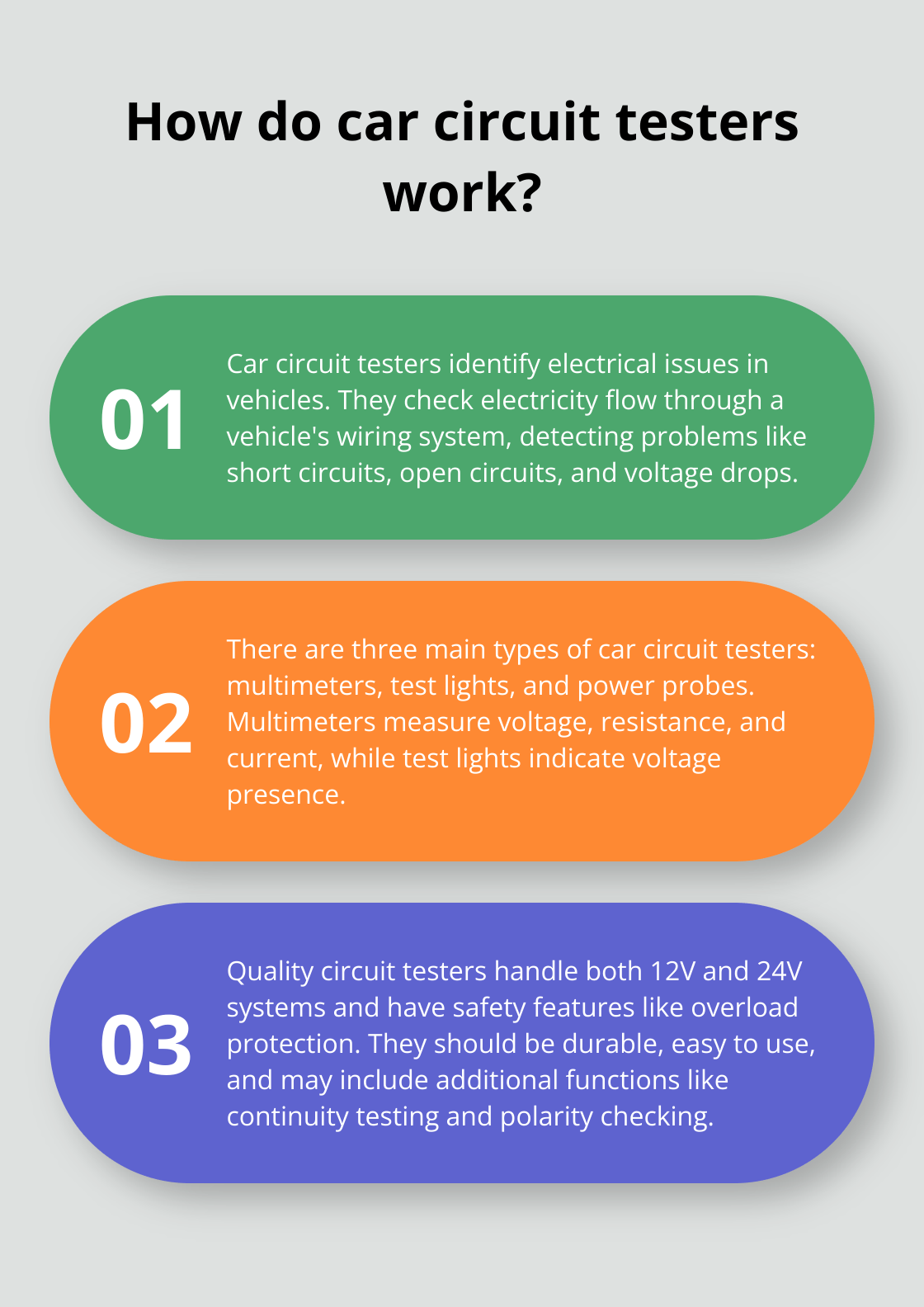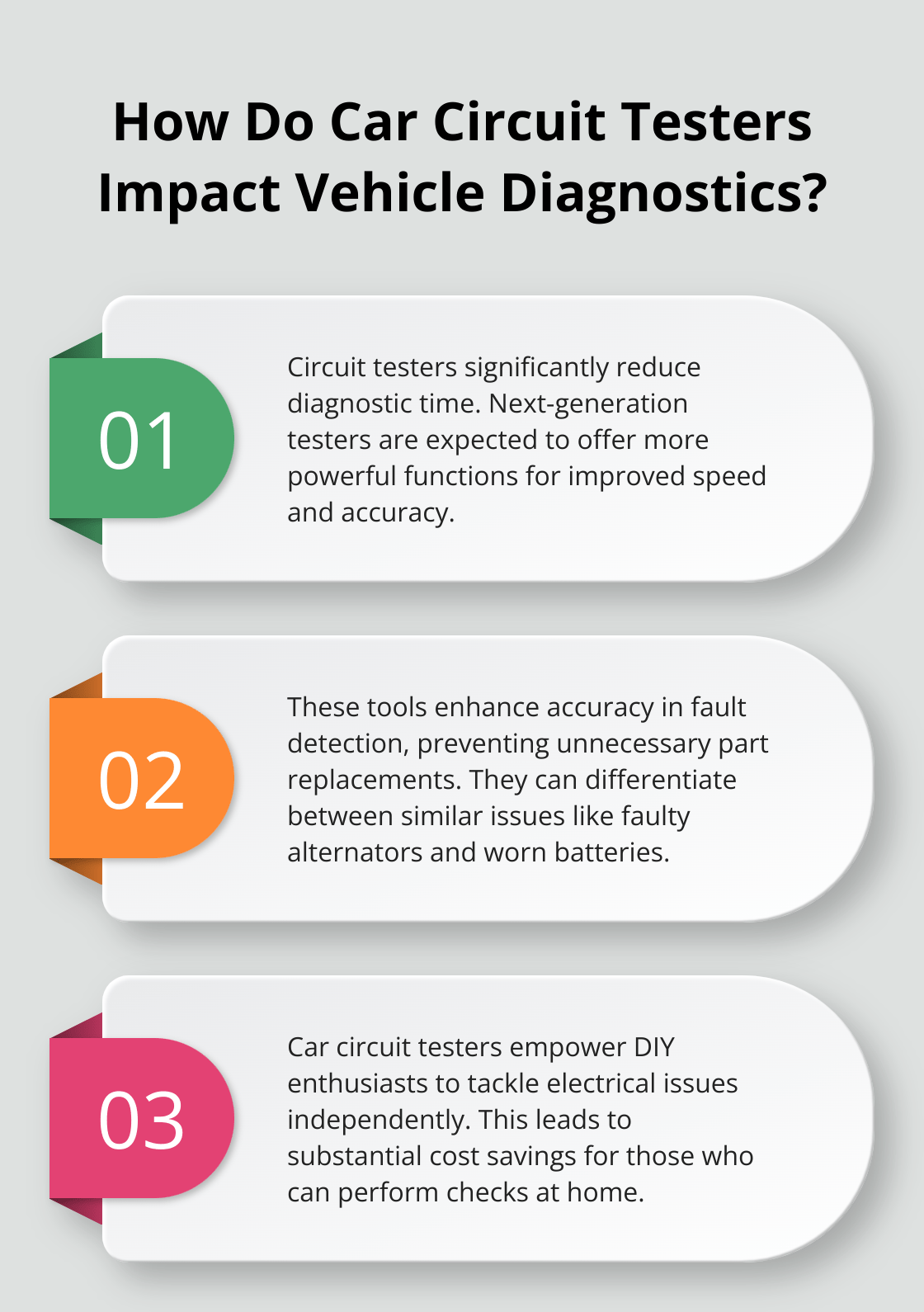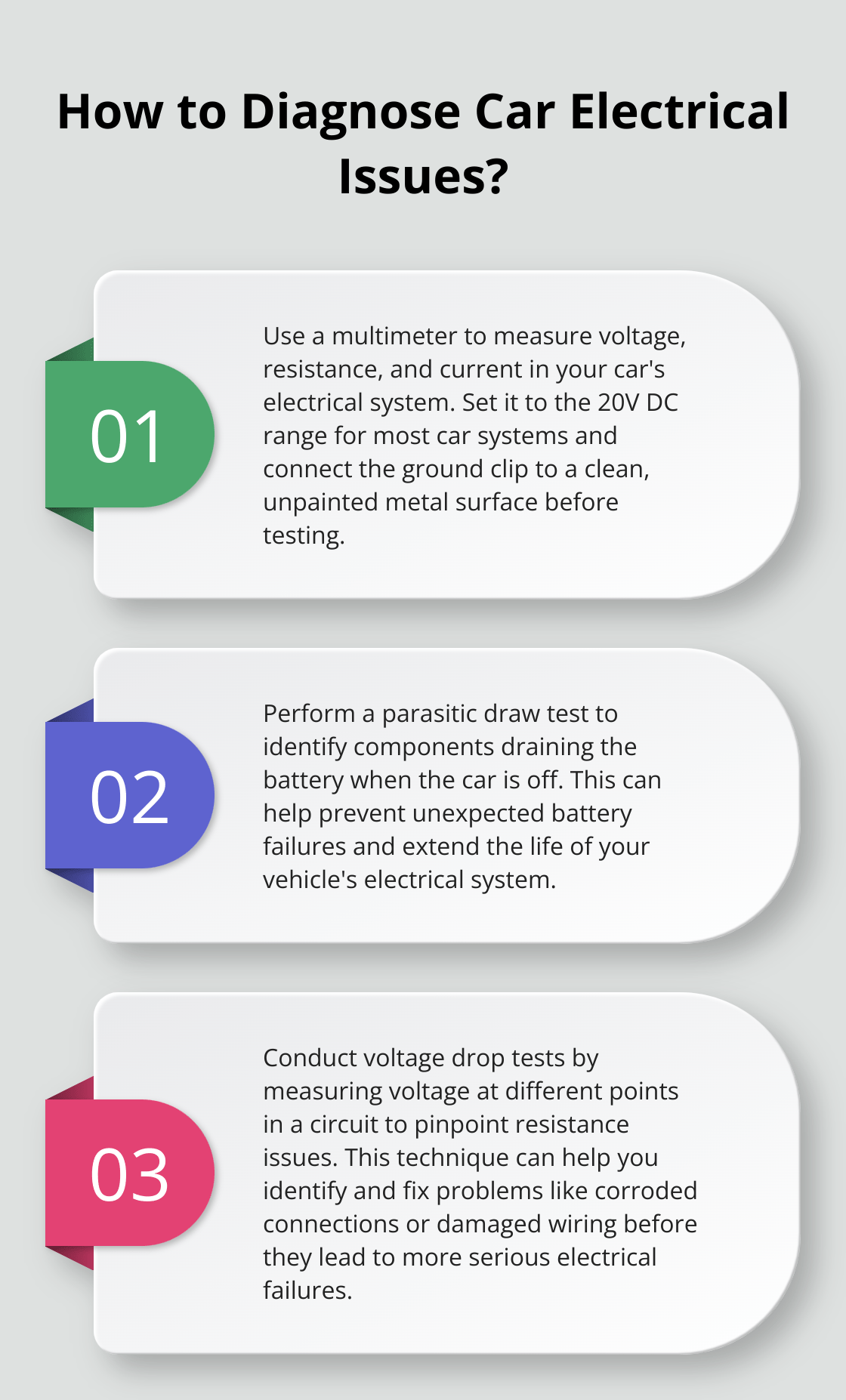At Dallian Auto Accessories, electrical issues can be a significant headache for car owners. That’s why we’re excited to introduce you to an indispensable tool: the circuit tester for cars.
This simple device can save you time, money, and frustration when diagnosing electrical problems in your vehicle. This post will explore how a car circuit tester works and why it’s necessary for every automotive toolkit.
Car circuit testers identify electrical issues in vehicles. These devices check the flow of electricity through a vehicle’s wiring system. They detect problems such as short circuits, open circuits, and voltage drops. Using a circuit tester can reduce time and expenses on unnecessary repairs or component replacements.
The market offers several types of car circuit testers:
When selecting a car circuit tester, consider these important features:
The correct circuit tester depends on your specific needs and level of expertise. For occasional use or basic diagnostics, a simple test light might suffice. However, a multimeter or power probe offers more versatility and precision for more frequent or complex diagnostics.

Professional mechanics often prefer advanced testers with features like data logging and graphing capabilities. These tools allow for more in-depth analysis of electrical systems.
DIY enthusiasts might find a mid-range tester with fundamental voltage and continuity testing adequate for most home automotive projects.
Regardless of your choice, investing in a quality circuit tester (even as part of a more extensive toolkit) can significantly improve your ability to diagnose and resolve electrical issues in your vehicle. You’ll want to understand how to use these tools effectively as you explore the various options available. Let’s move on to the next section, where we’ll provide a step-by-step guide on using a car circuit tester.
Safety comes first when using a car circuit tester. Always wear insulated gloves and safety glasses. Disconnect the battery if you work on high-voltage components. Keep your work area dry and well-lit.

The National Institute for Automotive Service Excellence (ASE) states that 95% of electrical accidents in automotive repair can be prevented with proper safety precautions.
To start testing, identify the circuit you want to test. Locate a good ground point (typically a clean, unpainted metal surface on the car’s body). Connect the tester’s ground clip to this point.
Touch the tester’s probe to the component or wire you’re testing. If you use a multimeter, set it to the appropriate voltage range (usually 20V DC for most car systems).
The reading should be close to 12V for a basic voltage test if the circuit functions correctly. Significantly lower readings might indicate a problem.
Circuit testers excel at identifying several common electrical problems:
The Automotive Aftermarket Suppliers Association reports that electrical system failures account for nearly 30% of vehicle breakdowns. Regular testing can help prevent many of these issues.
For more complex diagnostics, try these advanced techniques:
These methods can provide deeper insights into your vehicle’s electrical health.
Understanding your test results is as vital as performing the test itself. Here are some guidelines:
If you’re unsure about your findings, don’t hesitate to consult a certified mechanic. Complex issues might require professional assistance.
Mastering using a car circuit tester equips you to tackle many electrical issues in your vehicle. This knowledge leads to significant savings on diagnostic fees and unnecessary part replacements. The following section will explore the numerous benefits of using a car circuit tester, including how it can save you time and money in the long run.
Car circuit testers revolutionize vehicle electrical diagnostics. These tools slash diagnostic time significantly. The next generation of circuit probe testers will likely feature even more powerful functions, further improving diagnostic speed and accuracy. This efficiency directly translates into cost savings for repair shops and vehicle owners.
Circuit testers enhance the accuracy of electrical fault detection. This increased accuracy prevents unnecessary part replacements and promotes more first-time fixes.

For instance, a faulty alternator and a worn battery can sometimes present similar symptoms. A circuit tester quickly differentiates between these issues, preventing the unnecessary replacement of a perfectly good alternator (a mistake that could cost hundreds of dollars).
Car circuit testers empower DIY enthusiasts to tackle electrical issues independently. This empowerment leads to substantial cost savings. DIY enthusiasts can save on potential matters they investigate by performing these checks at home.
For professional repair shops, investing in quality circuit testers proves highly cost-effective. These tools allow technicians to diagnose problems quickly and accurately, increasing the number of vehicles they can service daily.
Moreover, the precision of circuit testers reduces the likelihood of warranty returns due to misdiagnosis, further improving a shop’s bottom line and reputation.
Circuit testers enhance safety during electrical diagnostics. They allow technicians to check for voltage without direct contact with potentially live wires. This feature is particularly valuable when working with high-voltage hybrid or electric vehicle systems.
Car circuit testers prove indispensable for professional mechanics and DIY enthusiasts alike. These devices reduce diagnostic time, improve fault detection accuracy, and empower car owners to address electrical issues independently. Quality circuit testers for cars enhance safety during diagnostics, mainly when working with high-voltage systems in modern vehicles.

At Dallian Auto Accessories, we recognize the importance of having the right tools for vehicle maintenance. We offer a wide range of automotive products, including diagnostic tools, to enhance your driving experience. Our selection includes professional auto repair tool kits, advanced dash cams, and car chargers, all at affordable prices.
A car circuit tester is an essential addition to any automotive toolkit. This versatile device will help you diagnose electrical issues quickly and accurately, saving you time and money in the long run (professional mechanics and DIY enthusiasts will benefit from its use). Invest in a quality circuit tester today and take control of your vehicle’s electrical health.
Leave a comment